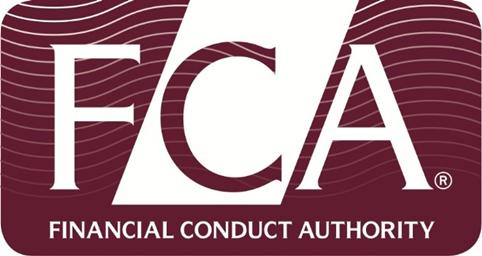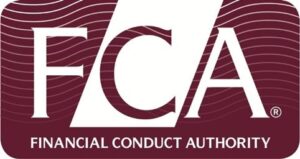The Financial Conduct Authority (FCA), which regulates the financial services industry in the UK, has published its long-awaited guidance on the supervision of financial promotions in social media. The outline approach is currently open for consultation so is not yet set in stone, but what will it mean for the already risk-averse approach to social media of financial services firms and advisers?
Back in March 2013 following the Libor-rigging and mis-selling of PPI scandals, Martin Wheatley, the then new Chief Executive of the FCA, announced that he planned to extend the monitoring of the conduct of the industry to include online checks for illegal or unethical activity via social media platforms like Twitter. However, until now, firms and advisers were given little indication of how to ensure compliance with regulations on these platforms, meaning that many have seen social media as more of a risk to their business than an opportunity.
Should the use of social media by financial services firms and advisers be encouraged?
The FCA’s aim is to: “help firms put the interests of their customers and the integrity of the market at the core of what they do” so that consumers can “use financial services with confidence and have products that meet their needs, from firms and individuals they can trust.” It therefore sees positive benefits in the use of social media for customer communications to build this trust through engagement.
The most important thing to note about the draft guidance from a communications perspective is that it refers specifically to a “supervisory approach to financial promotions in social media” rather than the use of social media in general. Promotional activity via social media poses a wide range of risks in any sector because social media is governed by its users who want to protect its founding principle as a communications/engagement platform rather than a promotional tool. The real power of social media for financial services firms is not in the ability to advertise products and services to a mass audience, but in the opportunity to understand, engage with and respond to the needs of stakeholders and customers to improve business practices – something which both the FCA and consumers now demand from them. Much of what can be done with social media as a business tool therefore sits outside of FCA regulation and is more about a cultural shift that puts the consumer at the heart of the business, rather than simply ensuring compliance.
However, before financial services firms can make social media core to their business, they must of course understand how the regulatory framework in which they operate translates in the digital world…
What counts as financial promotion via social media?
The FCA’s existing financial promotions rules (which state that all communication about financial products and services should be fair, clear and not mis-leading, ensuring that consumers fully understand both the benefits and risks), are designed to be ‘media-neutral’, which means that social media content is not exempt.
Anything that includes “invitation or inducement to engage in financial activity” is counted as financial promotion. For a financial promotion to be regulated by the FCA, it must be made “in the course of business”. Individuals using social media in a personal capacity should remember that anything that is seen as being in their commercial interest must be compliant.
Critically, when it comes to financial promotion via social media – a medium which is designed for two way communication and engagement rather than ‘selling’ – the FCA stresses that it must be “clear when a promotion is a promotion.” The guidance suggests using a sign like #ad in tweets to make this clear but we would advise that the content itself is also carefully worded so as not to be disguised simply as useful, impartial advice or information when it is in fact a sales message.
How do you ensure that complex information is conveyed in character-limited content?
When it comes to character-limited media such as tweets and Facebook ads where it is difficult to include certain necessary minimum information, the FCA’s advice is to signpost to complex features of financial products and services (including risk warnings) via a link or convey the information via visual content such as infographics. However, it is important to note that the FCA will monitor social media content as a stand-alone piece of promotion so an individual tweet, advert, sponsored post, status update, infographic or blog needs to comply with all relevant financial promotions rules when looked at in isolation.
This doesn’t mean that character-limited platforms and media are out of bounds for financial services firms and adviser. As with all the guidance, it is promotion of products and services specifically that is being monitored, not general communication and interaction. Abandoning the idea that social media can be used for direct selling or advertising is the safest approach but a business case needs to be made for the long term benefits of wider brand/relationship building activity.
How can use of specialist software help ensure compliance?
Since the FCA’s consultation opened, we have seen some technology companies suggesting that use of software which enables precise targeting of specific audiences and careful management of messages can help to ensure compliance. Whilst we advocate the use of social media management tools that capture content and conversations for auditing purposes (the FCA’s guidance notes that firms must keep historical records of their significant social media communications and not rely on platforms to hold the data), we would urge caution when it comes to relying too heavily on technology.
Ensuring compliance with the FCA’s guidelines requires a human approach to ‘sense check’ everything that is communicated via social media. The FCA makes clear that someone of “appropriate competence and seniority” should sign off social media content. It is therefore important that experts from across the business including compliance, finance, legal and marketing teams, work together to self-regulate. Automation of content should also be used sparingly to ensure that the interests of individual customers come first and that social media is used as it is intended – as a two way communications channel and not just a broadcasting tool.
It should also be recognised that using software to try and segment audiences is not possible on open platforms like Twitter where content is publicly available and can be retweeted and shared by anyone. Whilst the FCA stipulates it is the sharer of the content and not the original publisher that is responsible for it, firms should ensure that their original communication is fair and clear for all those that it could reach, including non-intended recipients. They should also ensure that anything they retweet or share (such as customer feedback) is not in breach of financial promotion rules.
This all sounds quite daunting for those that are responsible for using social media on behalf of a financial services firm. However, the fact that the industry regulator is putting social media on the agenda means that it will be taken seriously at board level, opening up the conversation for how social media can be used in a wider capacity. The implementation of the FCA’s guidance goes way beyond basic compliance checks. As in other heavily regulated sectors, such as the legal profession, what is required is a combination of an expert and common sense approach to ensure that the benefits outweigh the risks.
The consultation is open until 6 November 2014 and feedback is being invited by post, by email to Richard.lawes@fca.org.uk and the hashtag #smfca on Twitter. We will be getting involved and following it closely to enable us to help financial services firms and advisers understand what it means for them. Read an example of our work in the financial services sector and get in touch to discuss how we can help you prepare for the publication of the final version of the guidance and go beyond compliance to truly put the customer first.





